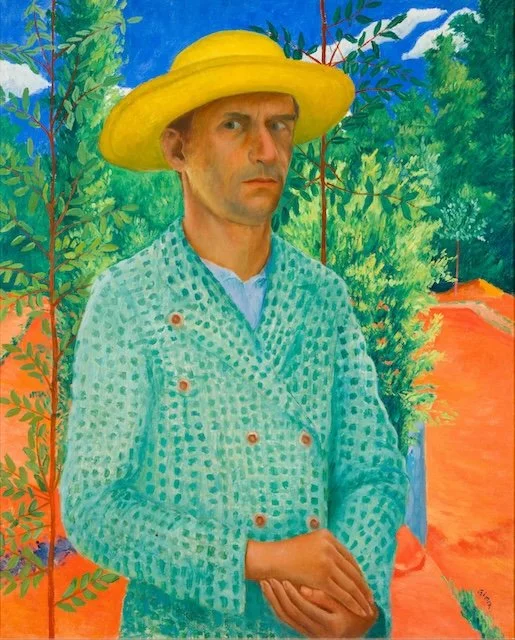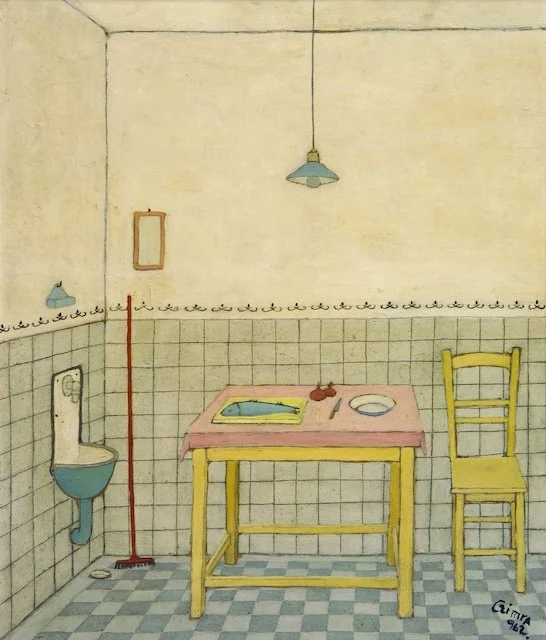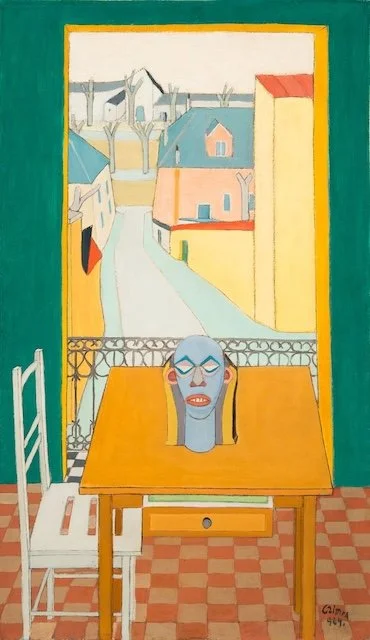Gyula Czimra: A Quiet Life Leading to Exceptional Art
zita kisgergely
Gyula Czimra (1901–1966) might be one of the most fascinating painters of 20th-century Hungary that you’ve never heard of. A reclusive and introspective artist, his work is admired for its clarity, diversity of style and quiet strength, placing him, without doubt, among the leading Hungarian painters of his time.
Self-portrait, 1934. Via Museum of Fine Arts, Budapest.
A recent exhibition at the National Gallery in Budapest, Without Shadow, presents nearly half of Czimra’s life’s work—around 180 pieces, including paintings, sculptures, drawings and tapestries.
Czimra was working as a technical draftsman when he started taking art classes at night. Serious in his intentions of becoming an artist, he travelled to Paris in 1923, taking a job as an engine fitter at the Renault factory to support himself. Czimra was soon enrolled in the Ecole National Supérieure des Beaux-Arts where he studied under Lucien Simon for a year. His first solo show, comprising mostly of his drawings, was held in 1926 at the Galerie de Zodiaque.
Gauguin Changes Everything
A turning point in Czimre’s art can be attributed to a major exhibition of Paul Gauguin’s work in Basel, Switzerland in 1928, which Czimra attended on his way back to Hungary. Gauguin clearly made a deep impression on Czimra, freeing him from his prior convictions regarding colour and form. This is strongly evident in his paintings and sculptures of the time. After returning to Hungary, Czimra reconnected with some of his old friends at the artists’ colony in Szentendre that had been established three years previously. His self-portraits here reveal a much more self-assured artist, and he began to attract critical attention.
Artist and his Wife, 1932. Hungarian National Gallery.
Retreat into a Secluded Life
The next year, in 1930, he married Etelka Zombory, who was working in the supreme court. Although Czimra built a house for them in Rákoshegy outside Budapest, the couple’s relationship was not completely conventional considering the time period. Until his death in 1966, Czimra tended his beloved garden and continued to experiment artistically, mostly at home and on the fringes of the artistic community, while Etelka remained the breadwinner of the family. It was in Rákoshegy that he developed his distinctive post-impressionistic style and experimented with his use of colour, clearly influenced by Vincent Van Gogh.
Retreating from the world and devoting himself to his garden, Czimra was eventually able to find his own unique style within the seclusion of his family home. After a period of painting very little between 1938 and 1954, he returned to his art with renewed vigour, producing some of his finest and most accomplished work. His love of geometric symmetry evident, the art of this period portrays the intimate interiors of his home life done in a minimalist, almost naïve style.
Still Life in the Kitchen, 1962. Hungarian National Gallery.
Gyula Czimra: Emerging from the Shadows
The title of the exhibition, Without Shadow, symbolizes the clarity of Czimra’s artistic vision, maintained throughout his evolution of an artist, as well as his love of a quiet, introspective life. The exhibition has hopefully gone some way to recognize this artist as one of the major figures of modern Hungarian art after having flown far too long under the radar.
View, 1964. Hungarian National Gallery.
Sources and further information:
Flatpack Films has years of experience servicing international brands, agencies, and production companies. Filming in Hungary is easy when relying on their knowledge of the market and ability to solve complex needs. They bring the best that Hungary has to offer in terms of unique locations, exceptionally skilled crews, top-of-the-line equipment and technical solutions. Backed by an impeccable track record, Flatpack Films has worked with world-class clients including Samsung, Samsonite, Toyota, Braun, Chivas Regal and many more.
Get in touch and learn more about Budapest film locations, Hungarian film incentives, film tax credits in Hungary and how Flatpack Films can bring your project to life through a highly bespoke approach.



